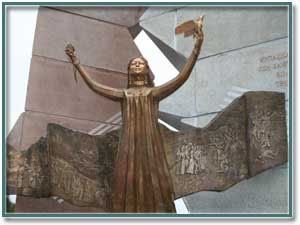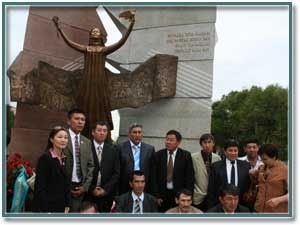What is the political significance of the twentieth Anniversary of the December 1986 student protests in Almaty?


Photos from www.zonakz.net
On Monday, President Nazarbayev unveiled the first significant monument to the 1986 Kazakh student protests in Almaty that rocked the Soviet Union, naming the statue the "Dawn of Freedom." Twenty years later, the events of December 1986, which brought hundreds of Kazkah students into the streets in protest of Moscow’s replacement of the ethnic Kazakh Party Secretary Konayev with the ethnic Russian Kolbin, still strike passions among the people of Kazakhstan. For Russians and other minorities in Kazkahstan, the protests represent the potential for Kazkah nationalism, which has been a lingering fear hanging over their heads since the fall of the U.S.S.R. For Kazakhs, the protests represent the national aspirations of their people and the critical importance of making Kazakhstan a Kazakh nation-state. Among the more nationalist Kazakhs, remembering the protests also provides an opportunity to raise the question of whether the increasingly wealthy state of Kazakhstan is really providing for them as the bearers of the nation. President Nazarbayev himself has had an ambiguous relationship with the December 1986 protests. When appropriate, he has tried to stress the importance of these events to the history of Kazakhstan’s independence. At the same time, he has long tried to manage any remembrances of the events, attempting neither to strike fear into his own Russian population nor to send a negative message to Russia. Furthermore, while Nazarbayev suggested during the early 1990s that he had always supported the students during those tense days in December 1986, many people have questioned his role in the crackdown on the protestors given that he was the second in command of the Communist Party of Kazakhstan at the time.
By the looks of the photos from the unveiling of the monument, it appears that the event on Monday was somewhat “low-key,” keeping with the historically cautious attitude of the Kazakhstan government towards the remembrance of the 1986 protests. With December approaching as the twentieth anniversary of these events, however, the contested history of the 1986 protests will inevitably become an increasingly “hot-button” topic in Kazakhstani politics. With the competition for succession heating up in the country, it is likely that various political forces will be vying for the right to represent the ideals of the students who went to the streets in December 1986. At the same time, the same forces will need to manage how that looks to the Russians and other minorities living in Kazakhstan. It is the kind of issue that has the potential to fuel ethnic tensions in a country that has prided itself in being a land of “ethnic harmony” following the fall of the U.S.S.R. It is also the kind of issue, however, that can provide Kazakhstan with a symbolic opportunity to reinforce its independence from Moscow. There are rumors, for example, that President Nazarbayev will be unveiling a monument to Kazakh independence in Washington, DC during his trip to the U.S. later this month. Will the twentieth anniversary of the December 1986 events also be the theme of that monument? If so, the symbolism would be interesting indeed.



0 Comments:
Post a Comment
<< Home